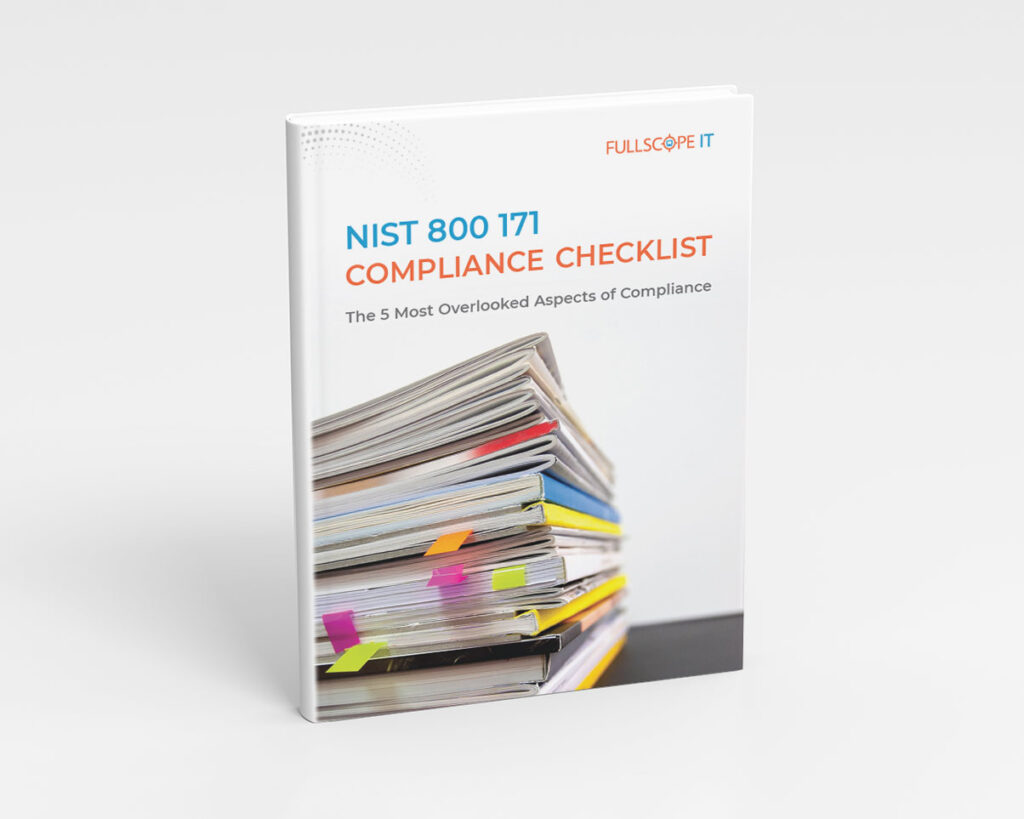What Are Insider Threats and How to Prevent Them?
How to protect your business from insider threats.
Threats don’t always come in the form of some shadowy figure in a distant land. Often, it’s closer to home, coming from inside your own walls. We’re talking about insider threats, a rising concern for businesses everywhere. These threats come in two flavors: the malicious insiders who intentionally do harm, and the negligent insiders who accidentally cause a data breach or leak sensitive information. Protecting your business against them is crucial, but it’s not always straightforward.
Why is it so challenging to prevent insider threats? For starters, these individuals already have legitimate access to your organization’s network and critical assets. This access can make detecting their harmful actions or mistakes much harder than stopping an external threat.
This article from FullScope IT explores the world of insider threats. You’ll learn what they are, who can be an insider, and the different types they come in. We’ll also cover how to detect and prevent these threats, from establishing solid security policies to leveraging technology solutions and promoting training and awareness. And, of course, we’ll introduce how FullScope IT can be your ally in this fight, providing the security services and managed IT services you need to keep your business safe.
What Are Insider Threats?
An insider threat isn’t just a buzzword; it’s a real and present danger in the realm of cybersecurity. Imagine someone within your own company, someone who knows the ins and outs of your security measures, turning that knowledge against you. This is the essence of an insider threat. It refers to any risk to your organization’s security and sensitive data that comes from people within your organization. This could be employees, contractors, or even business partners who have privileged access to your systems and sensitive information.
Unlike external threats from hackers or cybercriminals who attack from the outside, insider threats already have the keys to the castle. They don’t need to break through firewalls or launch a phishing attack to get in; they’re already in. This access allows them to bypass many of the security controls you have in place, making them potentially more damaging and harder to detect.
Who Is an “Insider”?
When we talk about insider threats, it’s crucial to understand who these “insiders” really are. An insider can be anyone with legitimate access to your organization’s network, systems, and sensitive data. This group isn’t limited to just your full-time employees. It also includes part-time staff, contractors, consultants, and even former employees who still have access to your systems. Business partners and vendors with access to your company data and customer data also fall into this category.
These individuals have a level of trust and access that external threat actors lack, making them a potent security risk if their intentions turn sour or if they become negligent insiders. Their access to critical assets, from sensitive information to intellectual property, positions them uniquely to cause harm, intentionally or accidentally.
Types of Insider Threats
When it comes to insider threats, understanding the different types that exist is crucial for protecting your business. These threats can come in various forms, each with its own motivations and methods of attack.
Each type of insider threat poses a unique challenge to security teams. By understanding the motivations and behaviors of these different types of insider threats, businesses can tailor their security policies and measures to better protect against them.
Recognizing that user behavior is a critical factor, whether through malicious actions or negligence, highlights the need for comprehensive risk management strategies that include behavior analytics, access controls, and continuous awareness training for all employees.
Let’s break down the three main types:
Malicious Insider Threats
These are the insiders who intentionally harm the company. They might be motivated by personal gain, financial gain, or malicious intent. A malicious insider could steal sensitive data, intellectual property, or trade secrets to sell them or use them to damage the company. They know exactly what security measures are in place and how to bypass them, making them incredibly dangerous.
Negligent Insider Threats
Not all insider threats come with bad intentions. Negligent insiders are those who accidentally cause harm through carelessness or lack of awareness. This could be an employee who falls for a phishing email, uses a weak password, or leaves their laptop in a public place. Their actions can lead to a data breach or security incidents without them even realizing it.
External Threat Actors Posing as Insiders
Sometimes, external threat actors manage to gain legitimate access to the company’s systems, effectively becoming insiders. They might do this by phishing, social engineering, or using the credentials of a disgruntled employee. Once inside, they have the same level of access as a real insider, making them particularly challenging to detect and stop.
How to Detect and Prevent Insider Threats
Tackling insider threats is all about staying one step ahead. It’s not just about catching the bad guys; it’s about creating an environment where they can’t succeed in the first place. This section dives into the nitty-gritty of how to spot those red flags and shield your business from the inside out.
Security Policies
The first line of defense against insider threats is establishing strong security policies. These policies are the backbone of your cybersecurity strategy, guiding how sensitive data and critical assets are handled within your organization.
By clearly defining what is expected of employees regarding data protection and access, you can minimize the risk of both malicious and negligent insider threats. It’s essential that these policies cover everything from password management to data access controls, ensuring that employees know how to safeguard company data and what behaviors are considered unacceptable.
Data Protection Measures
Safeguarding your sensitive data and information requires more than just a good intention; it requires concrete measures. Start with classifying your data to identify what is most valuable or vulnerable to insider attacks. Once classified, implement access controls to ensure that only those who need to use the sensitive information for their work have access to it. This reduces the risk of data breaches from both malicious insiders and negligent insiders.
Likewise, your intellectual property and trade secrets are the lifeblood of your business, giving you a competitive edge. Protecting these assets involves both legal and technical measures. Legally, ensure that employment agreements and non-disclosure agreements (NDAs) are in place and up to date. Technically, employ data loss prevention (DLP) tools to monitor and control data transfers. DLP tools can alert you to unauthorized attempts to move or download sensitive files, helping you catch a potential insider threat before it escalates.
Technology Solutions
Embracing technology solutions is essential in the fight against insider threats. Here’s how you can use technology to keep your business safe:
- Endpoint Security: It’s all about keeping an eye on every device that connects to your organization’s network. Endpoint security solutions work around the clock to monitor and control these devices, making it easier to spot insider threat incidents. Whether it’s a staff member’s personal phone or an unauthorized laptop, you’ll know if something’s amiss.
- Real-time Behavior Analytics: Imagine having a system that watches over user actions, spotting anything out of the ordinary. Real-time behavior analytics do just that. They alert you to weird data access patterns, unexpected file downloads, or other actions that scream “something’s not right here.” This tech can be a game-changer in identifying potential insider threats early on.
- Authentication and Privileged Access: Strong authentication measures and tight control over who gets privileged access are your best friends. By using multi-factor authentication and making sure permissions are given only when absolutely necessary, you significantly cut down the risk. And remember, always keep those permissions under review.
Training and Awareness
Knowledge is power, especially when it comes to cybersecurity. Running regular training sessions and awareness programs can turn your employees into a human firewall. They’ll learn to spot phishing attacks, social engineering tricks, and other scams that could open the door to insider threats.
Partnering with an Expert
Sometimes, you need that extra shield of protection. Teaming up with a managed service provider like FullScope IT brings you comprehensive security solutions tailored to your business. From 24/7 monitoring to specialized insider threat detection services, having an expert by your side means you’re always prepared.
Challenges of Preventing Insider Threats
Tackling insider threats is anything but easy. It’s a complex puzzle, especially when you dive into the nuances of user behavior and bump up against the limits of your security measures.
Complexity of User Behavior
The tricky part about insider threats is that insiders have the keys to the kingdom—they’ve got legitimate access to your organization’s network and sensitive data. Figuring out what’s normal and what might be a security risk is tough. Even with top-notch insider threat indicators, setting a reliable baseline for normal activity is challenging. This complexity makes it hard to spot when someone is stepping out of line until it’s potentially too late.
Limitations of Security Measures
Let’s be real: no security solution is perfect. Despite having solid security controls and risk management plans in place, insider threats can still slip through the cracks. These gaps might come from outdated tech, not having enough eyes on the cybersecurity ball, simple human error, or malicious insiders getting too clever for their own good.
Industry-Specific Challenges
Different strokes for different folks—or in this case, industries. Each sector has its own set of hurdles when it comes to keeping insider threats at bay:
- Healthcare: With patient info on the line, healthcare organizations have to juggle keeping data safe and making sure it’s quickly accessible. An insider could cause serious damage by getting unauthorized peeks at patient records.
- Financial Sector: Money talks, and financial data is a big target. The challenge here is watching over heaps of transactions and making sure no one inside the company uses their access for a quick buck.
Solving these Challenges
Getting ahead of insider threats demands a tailored strategy. FullScope IT steps up with custom-fit solutions to navigate through these complex waters. Offering everything from 24/7 monitoring to expert insider threat detection services, FullScope IT has the tools and know-how to bolster your defenses. With us by your side, you can take on the unique and ever-evolving challenges of protecting your business from the inside out.
How FullScope IT Can Help Protect Your Business from Insider Threats
Insider threats are a big deal for any business. They can come from malicious insiders after a quick buck or just from negligent employees who slip up and cause a data breach. That’s why it’s crucial to have a solid defense plan, mixing strong security policies with the latest tech defenses. Here’s where FullScope IT comes into play.
As a top-notch Managed Service Provider, FullScope IT is all about keeping your IT setup under close watch, all day, every day. We’re proactive, not reactive, making sure potential threats are dealt with long before they can do any harm.
Ready to protect your organization against insider threats? Contact FullScope IT today.
Want more cybersecurity tips? Check out our Cybercast, FullScope IT: Safeguarding the Digital Frontier.










